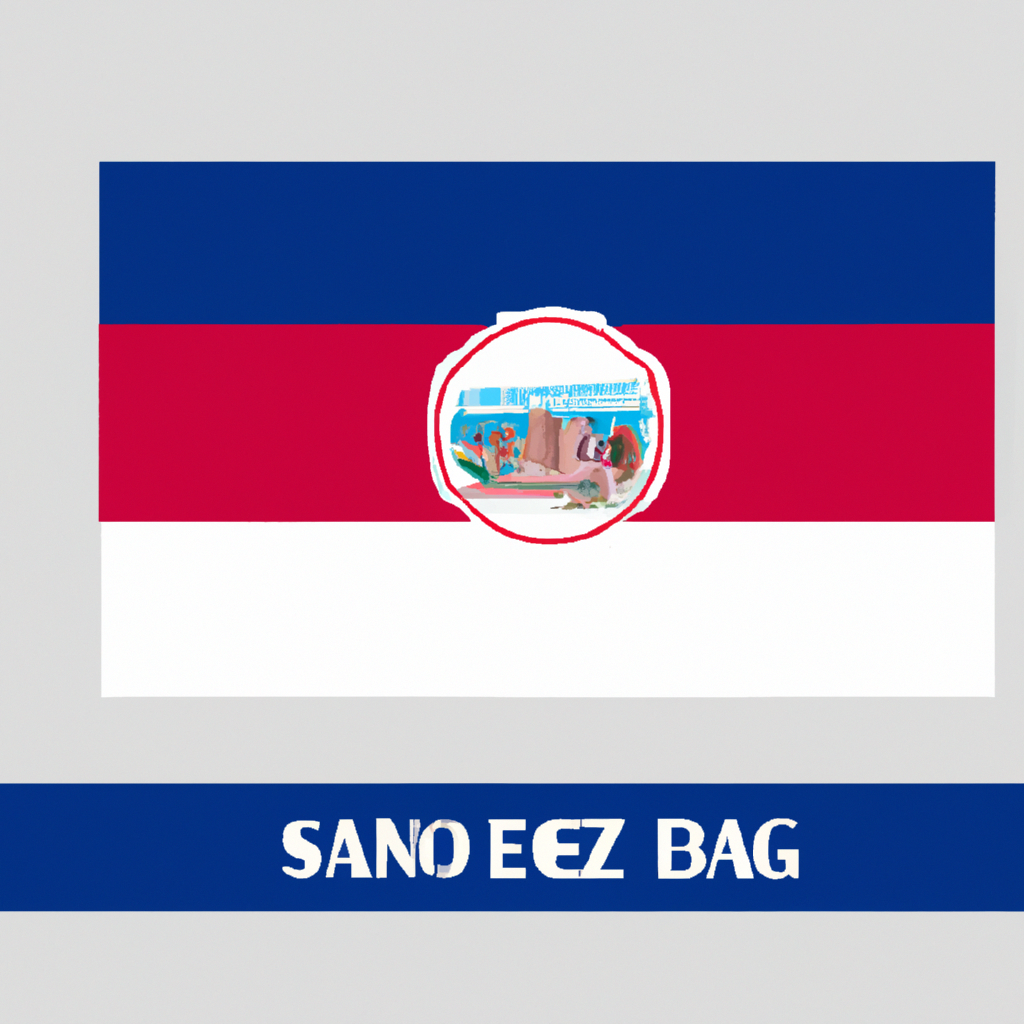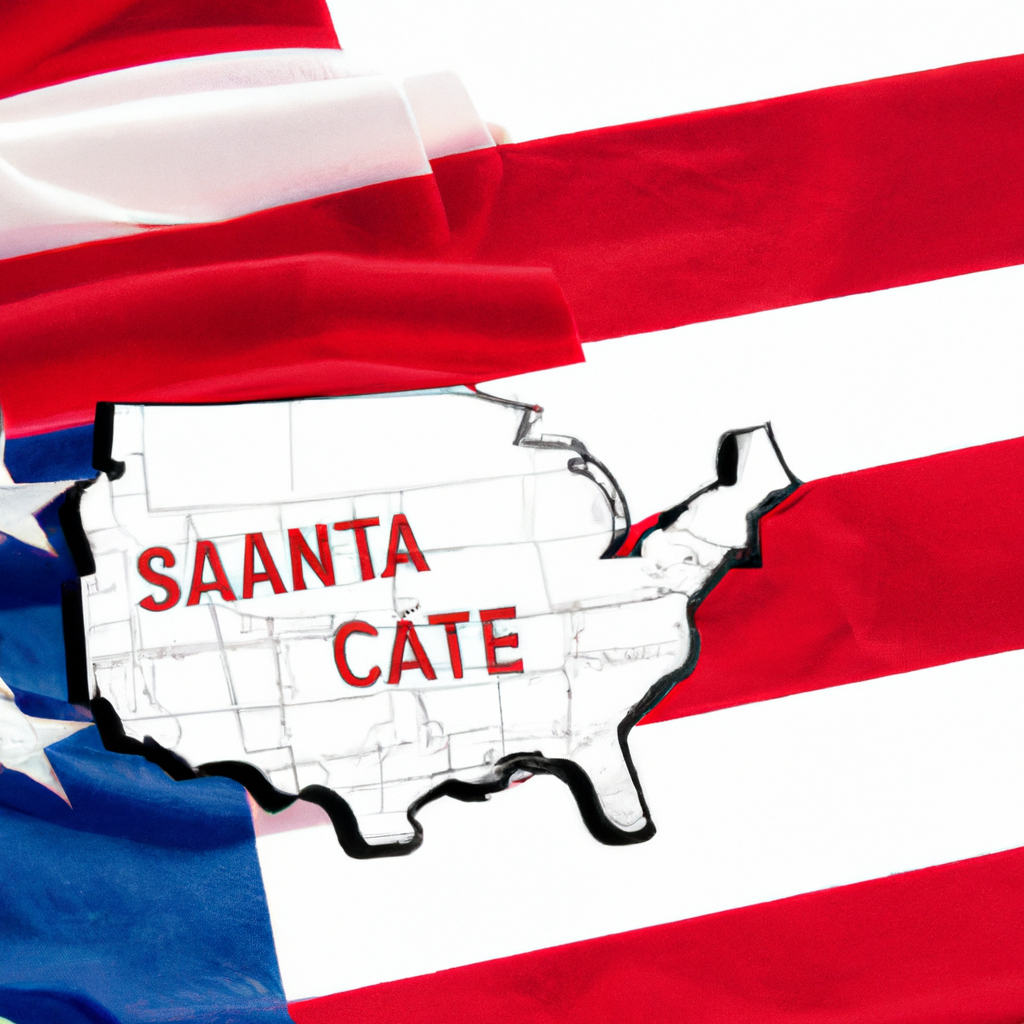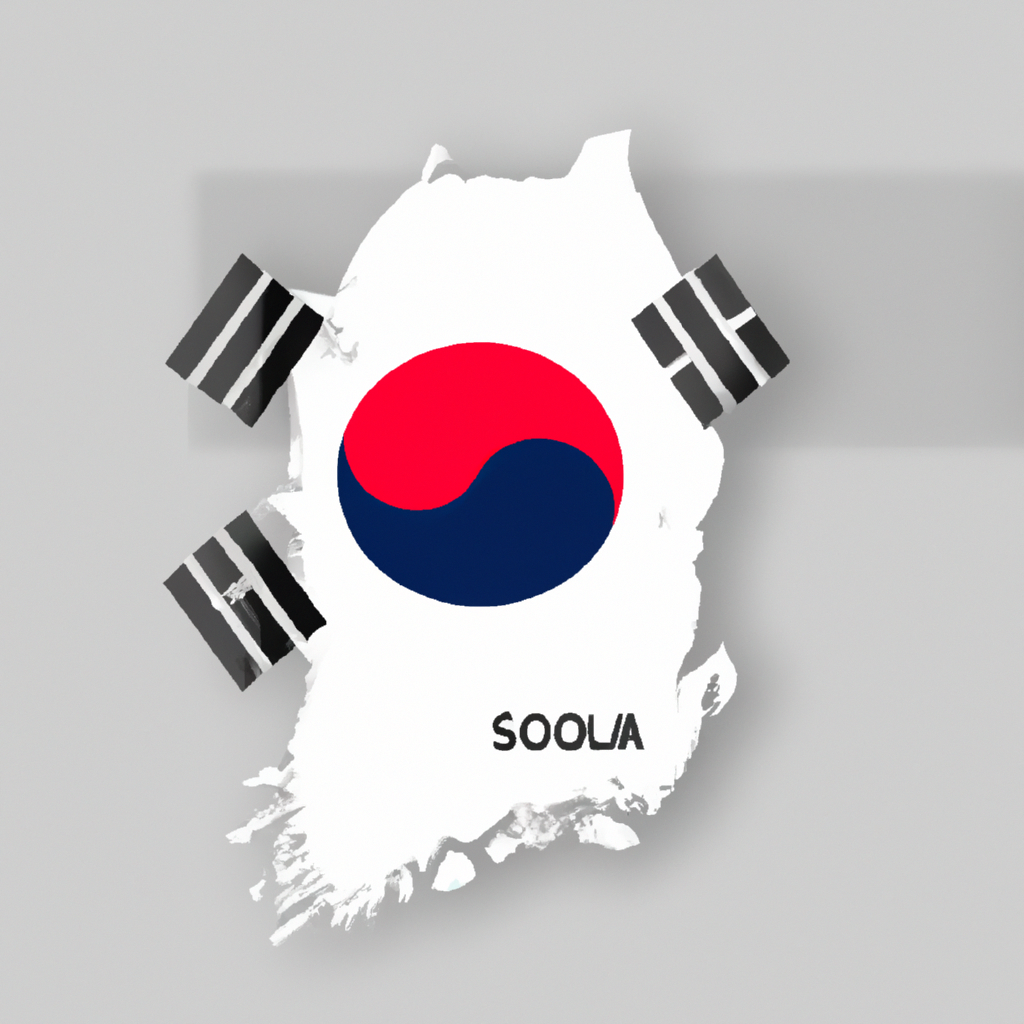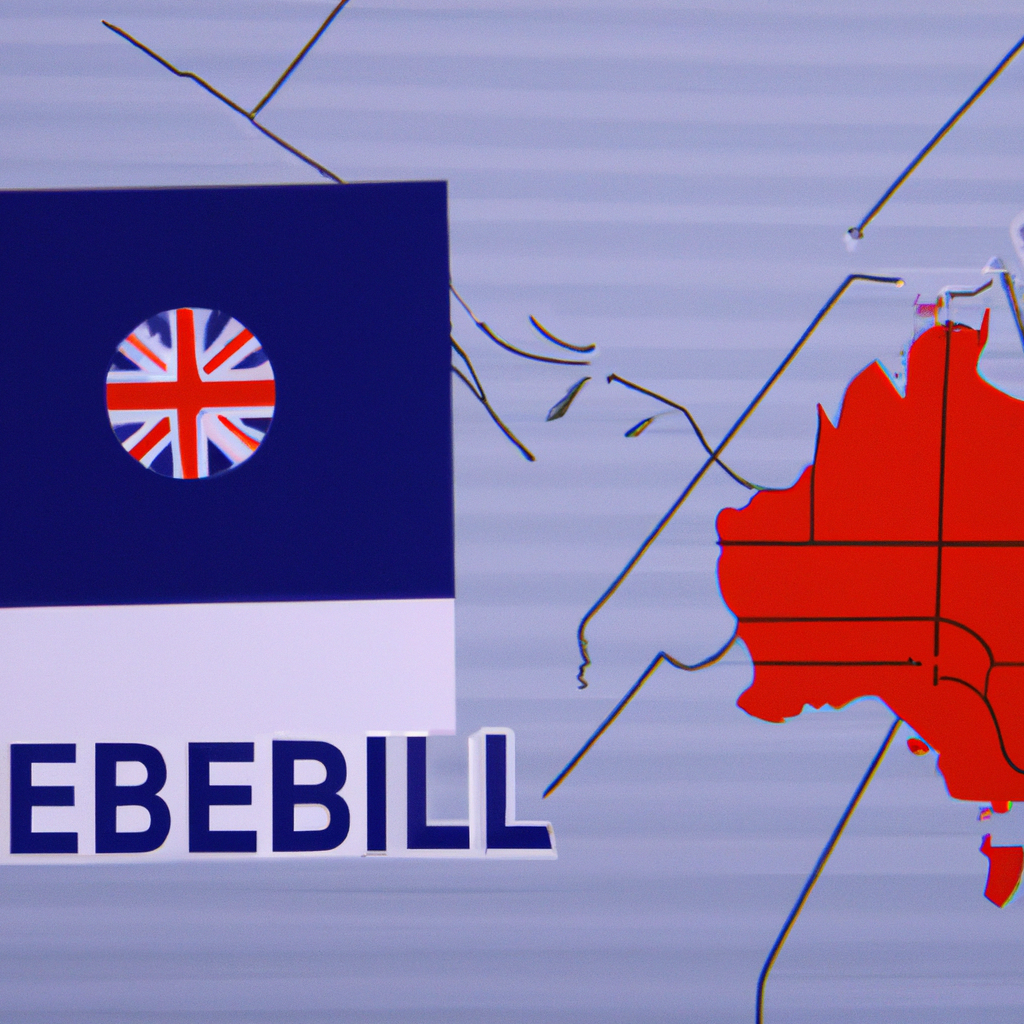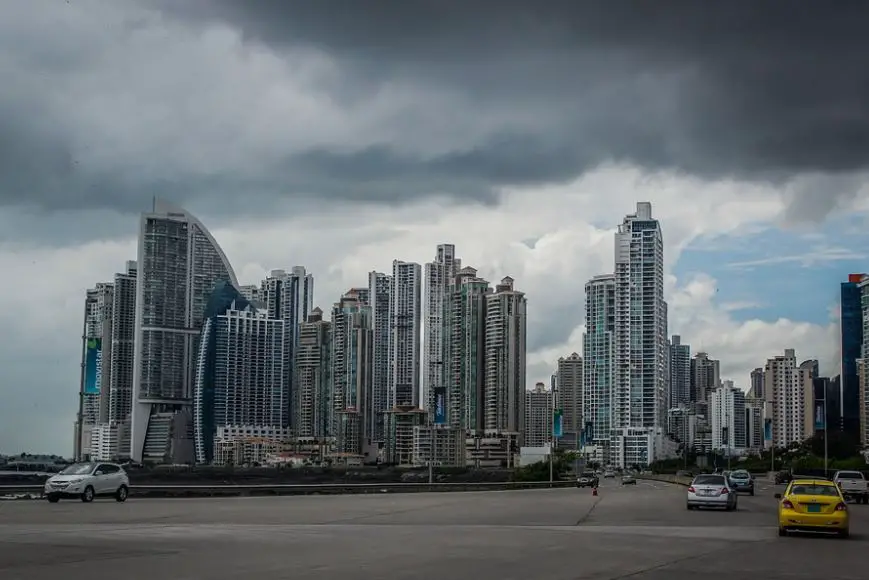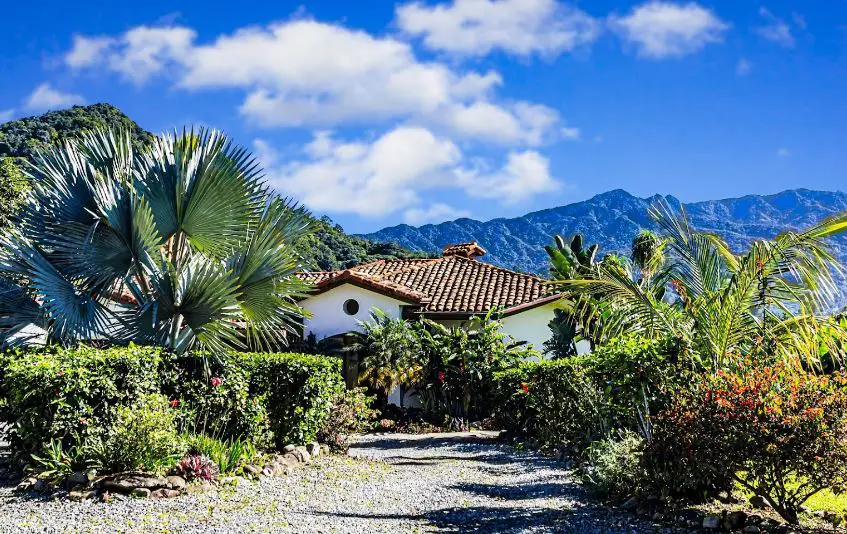Panama City, Panama: Interesting Facts,History, Things to do,Why to Visit
Post ByAdequate Travel
Panama City, Panama needs no introduction when it comes to its wealth of interesting facts,history, and things to do. As the country’s largest city and capital, there’s no shortage of culture, rich colonial heritage and breathtaking landmarks. Located 15 feet above sea level, impressive skyscrapers fill the skyline, also making it one of the most modern cities in Central America. With endless attractions, delicious cuisine, diverse entertainment, unforgettable experiences, and so much more, there's no wonder why Panama City is fast becoming a popular destination for both international and local travelers. This blog post promises to highlight some of the city’s most unique attractions, such as its historic sites, galleries, nighttime scenes, and activities to enjoy - ones that will make sure your visit to Panama City is a memorable one.
Panama is a country located in Central America, bordered by Costa Rica to the west and Colombia to the southeast. It is known for its famous canal, which connects the Pacific and Atlantic Oceans, making it a crucial international trade route. The country's economy relies heavily on services, tourism, and the canal, which plays a significant role in global shipping. Panama City, the capital, is a bustling metropolis with a skyline dominated by modern skyscrapers. The country is recognized for its rich biodiversity, tropical rainforests, and diverse indigenous cultures. Panama has a stable democratic government and continues to experience economic growth and development.panama tourist attractions offer a diverse range of experiences for every traveler.
Interesting facts
1. Panama Canal:
The Panama Canal is one of the most notable engineering feats in the world. It connects the Atlantic Ocean to the Pacific Ocean, allowing ships to pass through the narrow land bridge of Panama instead of having to sail around South America's tip. This significantly shortens travel time and saves costs for international trade. The canal was completed in 1914 and spans approximately 50 miles, with locks that raise and lower vessels as they pass through the different levels. It has had a profound impact on global trade and is a major source of revenue for Panama.
2. Biodiversity:
Panama is home to an astonishing amount of biodiversity. Despite its small size, the country boasts an incredible variety of ecosystems, including rainforests, cloud forests, coral reefs, mangroves, and more. Its unique geographical location, bridging North and South America, has allowed for a rich diversity of plant and animal species to coexist. For example, Panama is home to over 900 bird species, more than the United States and Canada combined. The country's commitment to conservation and protected areas has helped preserve its natural treasures.
3. Darien Gap:
The Darien Gap is a dense and virtually impassable jungle region that separates Panama from Colombia. It is roughly 100 miles long and forms a break in the Pan-American Highway, which runs from Alaska to the southernmost tip of Argentina. Due to the challenging terrain and lack of infrastructure, this stretch remains undeveloped and is considered one of the few gaps in the Pan-American Highway system. It is home to indigenous communities and a wide range of wildlife, making it an intriguing natural and cultural area.
4. Gold in the Past:
During the Spanish colonial era, Panama was known for its abundance of gold. The country was a major source of the precious metal for Spain, and many expeditions were carried out to extract gold from its rivers and mountains. The famous Spanish conquistador Vasco Núñez de Balboa discovered the Pacific Ocean in 1513 while searching for gold. Today, remnants of this gold-rich history can still be found in the form of museums and archaeological sites that showcase Panama's past wealth and influence.
5. Seven Indigenous Groups:
Panama recognizes seven major indigenous groups within its borders: the Emberá, Wounaan, Guna, Ngäbe, Buglé, Bribri, and Naso. These indigenous communities have deep-rooted traditions, languages, and cultural practices that have been preserved for centuries. They contribute to the country's cultural diversity and offer visitors a chance to experience their unique way of life. Panama takes pride in its cultural heritage and strives to protect and promote the rights of indigenous peoples.
From museums to parks,panama tourist attractions offer something for everyone, making it a versatile destination for all type of tourists.History of Panama
The history of Panama can be traced back to ancient times when it was inhabited by various indigenous tribes. The most prominent among them were the Cueva and Coclé peoples, who lived in the region between 5,000 and 2,000 BC. These indigenous communities thrived due to the abundant natural resources in Panama, including fertile land, gold, and precious stones.
Spanish Colonization
In 1501, Spanish explorer Rodrigo de Bastidas encountered Panama during his exploration of the Caribbean coast. In 1513, Vasco Núñez de Balboa became the first European to cross the Isthmus of Panama and reach the Pacific Ocean. This discovery opened up Panama as a crucial passage for the Spanish Empire to transport gold and silver from South America to Europe.
The Spanish established Panama City in 1519, which became an important economic and administrative center. The city also served as a hub for expeditions to explore and conquer the Inca Empire in present-day Peru. The construction of the Camino Real, a road connecting Panama City to the Caribbean coast, further enhanced its strategic importance.
Panama as part of Colombia
In the early 19th century, Panama, along with other territories in South America, gained independence from Spain. Initially, Panama joined the Republic of Gran Colombia, which comprised modern-day Venezuela, Colombia, Ecuador, and Panama.
However, tensions between Gran Colombia's central government in Bogotá and Panama led to the province's desire for greater autonomy. In 1903, Panama successfully seceded from Colombia with the support of the United States. The newly independent Panama then granted the United States control over a 10-mile-wide zone to construct the Panama Canal.
Building and Control of the Panama Canal
Construction of the Panama Canal began in 1904 and was completed in 1914. This engineering marvel connected the Atlantic and Pacific Oceans, revolutionizing global trade and transportation. The United States controlled the Panama Canal Zone until 1977 when the Torrijos-Carter Treaties were signed, transferring control to Panama in full on December 31, 1999.
Panama in the 20th Century
Throughout the 20th century, Panama experienced political and economic upheavals. The country faced periods of military rule, dictators, and political instability. However, in recent years, Panama has seen significant economic growth, driven mainly by its service and finance sectors.
The Panama Canal remains a vital asset for global maritime trade, and Panama City has become a thriving metropolis with a modern skyline. Panama continues to attract tourists with its beautiful beaches, diverse wildlife, and rich cultural heritage.
Exploring the rich heritage of historical sites in panama is a journey through time and culture.Famous Things of Panama
1. Panama Canal
The Panama Canal is a famous engineering marvel and a major international waterway. It connects the Atlantic and Pacific Oceans, allowing ships to bypass the lengthy and hazardous Cape Horn route. The canal has played a significant role in global trade and transportation since its completion in 1914.
2. San Blas Islands
The San Blas Islands are a stunning archipelago located off the Caribbean coast of Panama. These islands are known for their pristine white-sand beaches, crystal-clear turquoise waters, and vibrant coral reefs. The indigenous Guna Yala people inhabit the islands, and visitors can experience their unique culture and traditions.
3. Casco Viejo
Casco Viejo, also known as the Old Quarter, is a historic district in Panama City. It features colonial architecture, cobblestone streets, and charming plazas. Casco Viejo is home to many historical landmarks, such as the Metropolitan Cathedral, Presidential Palace, and Teatro Nacional. It is a UNESCO World Heritage Site and a popular tourist destination.
4. Bocas del Toro
Bocas del Toro is a picturesque archipelago in the Caribbean Sea. It offers a tropical paradise with lush rainforests, vibrant coral reefs, and beautiful beaches. Visitors can enjoy activities like snorkeling, diving, surfing, and exploring the diverse marine life. The main town of Bocas del Toro is known for its colorful Caribbean-style buildings and vibrant nightlife.
5. Panama Hat
The Panama Hat, despite its name, is actually a traditional brimmed straw hat originating from Ecuador. However, Panama became associated with the hat as it gained popularity during the construction of the Panama Canal when many workers wore these hats. The Panama Hat is renowned for its lightweight and breathable material, making it ideal for hot and sunny climates.
6. Coiba National Park
Coiba National Park is located in the Gulf of Chiriqui, off the Pacific coast of Panama. It is a UNESCO World Heritage Site and is known for its rich biodiversity and pristine ecosystems. The park includes Coiba Island, which was once a penal colony and now offers opportunities for wildlife viewing, hiking, and diving. The surrounding waters are home to various marine species, including sharks, dolphins, and turtles.
Discover some unique facts about panama that will leave you amaze and intrigue.Culture of Panama
The culture of Panama is a unique blend of indigenous, European, African, and North American influences. It is characterized by its vibrant and diverse traditions, music, art, cuisine, and religious practices.
1. Indigenous Heritage
The indigenous population in Panama comprises various tribes, including the Guna, Embera, Wounaan, Ngäbe, and Bugle. These tribes maintain strong connections to their ancestral customs, language, and crafts. Examples of their cultural practices include traditional dances, intricate crafts made from natural materials, and storytelling traditions that pass down oral histories.
2. European Influence
Due to its history as a Spanish colony, Panama has a significant European influence, particularly Spanish. This is evident in the country's language, architecture, and religious practices. Catholicism, brought by the Spanish, is the dominant religion in Panama, and religious festivals, such as Semana Santa (Holy Week), hold great importance in the culture. Additionally, Spanish cultural elements are often seen in Panamanian cuisine, music, and dance.
3. African Contributions
The presence of African culture in Panama is a result of the African diaspora during the colonial era. Many Afro-Panamanians have preserved their African roots by practicing traditional music, dance, and religious beliefs. One example is the Congo dance, which originated from African traditions and is performed during festivals and celebrations.
4. North American Influence
Due to the Panama Canal and the US military presence in the past, Panama experienced North American influences, especially in urban areas. This influence is reflected in the architecture, fashion, and lifestyle choices of some Panamanians. Some popular North American traditions, like Halloween and Thanksgiving, have also been adopted in the country.
5. Art and Music
Panama has a vibrant art scene with a fusion of various cultural influences. Indigenous artistic expressions, Spanish colonial art, and contemporary styles contribute to its rich art culture. Traditional music, such as the upbeat and lively music known as "tamborito," combines African and indigenous rhythms with Spanish influences. Panama is also known for its internationally renowned musicians and popular genres like salsa, reggaeton, and reggae en español.
Overall, the culture of Panama is a dynamic tapestry that showcases the country's diverse heritage and influences. It is a beautiful fusion of indigenous, European, African, and North American elements, making Panama a truly unique and culturally rich nation.Immerse yourself in the local culture by exploring panama's top-rated tourist attractions.Cuisine of Panama
Panamanian cuisine is a fusion of indigenous, African, Spanish, and Caribbean flavors, making it a unique and diverse culinary practice. It reflects the country's rich history and the influence of various ethnic groups that have shaped its gastronomy over time.
Main features of Panamanian cuisine:
1. Rice: Rice is a staple in Panama and is commonly served with most meals. It is often cooked with onion, garlic, and other spices to enhance its flavor.
2. Beans: Various types of beans, such as black beans and red beans, are used extensively in Panamanian cuisine. They are typically cooked with onions, cilantro, and other seasonings.
3. Corn: Corn is another essential ingredient in Panamanian dishes. It is used to make tortillas, tamales, and empanadas.
4. Seafood: With Panama's coastal location, seafood plays a significant role in the country's cuisine. Fresh fish, shrimp, lobster, and crab are commonly used in dishes such as ceviche, seafood soups, and grilled fish.
5. Plantains: Plantains are a versatile ingredient in Panamanian cooking. They can be fried, boiled, mashed, or used to make plantain chips.
6. Coconut: Coconut is used in a variety of forms, including coconut milk, grated coconut, and coconut oil. It adds a rich and tropical flavor to many dishes.
Examples of popular Panamanian dishes:
1. Sancocho: A traditional Panamanian chicken soup with a flavorful broth made from cilantro, oregano, and various vegetables.
2. Arroz con Pollo: A popular rice dish cooked with chicken, vegetables, and spices.
3. Patacones: Fried plantains that are flattened and served as a side dish; often accompanied by garlic sauce or other toppings.
4. Ceviche: Fresh seafood (fish, shrimp, or octopus) marinated in lime juice, mixed with onion, cilantro, and other seasonings.
5. Hojaldres: Panamanian-style fried dough, similar to a Latin American version of a beignet or donut.
Panamanian cuisine offers a diverse range of flavors and textures, combining traditional ingredients with influences from various cultural backgrounds. It is a reflection of the country's vibrant history and is worth exploring for any food enthusiast.Explore the popular places in panama, and immerse yourself in its vibrant culture.1. Explore the Panama Canal
One of the most popular attractions in Panama is the Panama Canal. It is a man-made waterway that connects the Atlantic Ocean to the Pacific Ocean, allowing ships to bypass the long journey around South America. Visitors can take a tour of the canal and learn about its history and significance. For example, you can visit the Miraflores Locks Visitor Center, where you can see ships passing through the locks and learn about the engineering marvel of the canal.
2. Visit Casco Viejo
Casco Viejo, also known as the Old Quarter, is a historic neighborhood in Panama City. It is characterized by its Spanish colonial architecture, narrow cobblestone streets, and vibrant atmosphere. Visitors can wander through the colorful streets, visit historic sites such as the Metropolitan Cathedral and the Presidential Palace, and enjoy the local cafes, restaurants, and shops. For instance, you can visit Plaza de la Independencia, a beautiful square surrounded by colonial buildings, where you can sit and people-watch while enjoying the lively atmosphere.
3. Relax on the San Blas Islands
The San Blas Islands are a stunning archipelago located off the Caribbean coast of Panama. Known for their pristine white sand beaches and crystal-clear turquoise waters, these islands are a paradise for beach lovers and water sports enthusiasts. Visitors can swim, snorkel, or simply relax on the beaches. The islands are also home to the indigenous Guna people, who have preserved their traditions and way of life. You can stay in one of the eco-friendly accommodations on the islands and immerse yourself in the local culture.
4. Hike in the Boquete Highlands
The Boquete Highlands, located in the western part of Panama, are famous for their lush green mountains, coffee plantations, and cool weather. It is a perfect destination for outdoor enthusiasts and nature lovers. Visitors can go hiking on the numerous trails in the area, visit the beautiful waterfalls, and explore the coffee farms. You can also try zip-lining, bird-watching, or take a relaxing dip in one of the natural hot springs.
5. Explore Bocas del Toro
Bocas del Toro is an archipelago on the Caribbean coast of Panama, known for its stunning beaches, crystal-clear waters, and vibrant marine life. Visitors can explore the islands by boat, go snorkeling or diving to discover the colorful coral reefs, or simply relax on the beach. Bocas Town, the main hub of the archipelago, offers a range of restaurants, bars, and shops. You can also visit the Bastimentos National Marine Park, which is home to tropical rainforests and diverse wildlife species.
When planning your trip to panama, be sure to include the best things to do in panama, which encompass a wide range of cultural experiences.Climate of Panama
The climate of Panama is tropical and is influenced by several factors, including its geographical location, ocean currents, and the prevailing winds. This Central American country experiences two primary seasons - the wet and dry seasons.
Wet Season
During the wet season, which typically lasts from May to December, Panama experiences heavy rainfall. This period is characterized by frequent afternoon thunderstorms and high humidity levels. The amount of rainfall varies across different regions of the country. For example, the Pacific coast and lowland areas receive more precipitation compared to the Caribbean coast and the mountains.
Dry Season
The dry season in Panama runs from January to April. During this period, there is a significant decrease in rainfall, and the country experiences drier and hotter weather. The dry season is characterized by clear skies, minimal cloud cover, and lower humidity levels. This is a popular time for tourists to visit Panama, as the weather is generally more favorable for outdoor activities.
Temperature
Throughout the year, Panama maintains a relatively high average temperature. The coastal regions tend to be hotter than the mountains and highland areas. The average temperature in most parts of the country ranges between 80°F (27°C) and 90°F (32°C) during the day. However, temperatures can drop slightly during the night, particularly in higher elevations.
Microclimates
Due to Panama's unique geographical features, it exhibits microclimates within its borders. For example, the mountainous region of Boquete has a cooler climate compared to lowland areas like Panama City. The Archipelago of Bocas del Toro experiences a milder climate due to the cooling effect of maritime breezes.
El Niño and La Niña
Occasionally, Panama is affected by El Niño and La Niña phenomena, which can have significant impacts on its climate patterns. El Niño, characterized by unusually warm ocean waters in the central and eastern Pacific, can bring drier conditions to Panama. On the other hand, La Niña, characterized by cooler ocean waters in the same regions, can result in wetter conditions and increased rainfall.
Overall, the climate in Panama is characterized by a tropical environment with distinct wet and dry seasons. The country's unique geography contributes to variations in temperature and precipitation across different regions. Understanding the climate of Panama is essential for planning various activities, from outdoor adventures to agricultural practices.Explore the popular places in panama, and immerse yourself in its vibrant culture.Popular Activities in Panama
1. Explore the Panama Canal:
One of the most iconic attractions in Panama is the Panama Canal. Visitors can explore the locks and learn about the history and engineering behind this impressive feat. There are guided tours available that provide a deeper understanding of the canal's importance and its impact on international trade.
2. Visit Casco Viejo:
Casco Viejo, also known as the Old Quarter, is a historic district in Panama City. It features charming cobblestone streets, colorful colonial buildings, and a lively atmosphere. Visitors can explore the many shops, restaurants, and cafes, or visit landmarks such as the Metropolitan Cathedral and the Plaza de Francia.
3. Relax on the San Blas Islands:
The San Blas Islands are a breathtaking archipelago located off the Caribbean coast of Panama. These islands are known for their pristine white-sand beaches, crystal-clear turquoise waters, and vibrant coral reefs. Visitors can relax, swim, snorkel, or even stay overnight in traditional Guna Yala huts.
4. Hike in the Cloud Forests of Boquete:
Boquete, located in the highlands of Panama, is famous for its cloud forests and lush vegetation. It offers numerous hiking trails through stunning landscapes, including the challenging hike to the Baru Volcano summit, which offers panoramic views of the Pacific Ocean and the Caribbean Sea.
5. Experience Indigenous Cultures:
Panama is home to various indigenous groups with rich traditions and cultures. Visitors can immerse themselves in indigenous communities such as the Emberá or the Guna Yala, where they can learn about their customs, crafts, and traditional way of life.
Plan your trip with a list of the best things to do in panama, catering to all interests.Nightlife in Panama:
Panama is known for its vibrant and exciting nightlife scene. From rooftop bars and nightclubs to casinos and live music venues, there are plenty of options to choose from when it comes to enjoying the night in Panama City.
Rooftop Bars:
Panama City boasts numerous rooftop bars that offer stunning views of the city skyline and surrounding ocean. These bars provide a trendy and sophisticated atmosphere, with comfortable seating areas and often a swimming pool. Some popular rooftop bars in Panama City include Tantalo Rooftop Bar, CasaCasco, and Gatto Blanco Rooftop.
Nightclubs:
Panama City is home to a thriving nightclub scene, with venues that cater to all styles of music and preferences. Whether you're into electronic music, hip-hop, reggaeton, or salsa, you'll find a nightclub that suits your taste. Some of the well-known nightclubs in Panama City include Teatro Amador, La Tana, and Bling Nightclub.
Casinos:
If you're feeling lucky, Panama City offers a wide range of casinos where you can try your hand at various games. These casinos often feature slot machines, poker tables, roulette, and blackjack. Some popular casinos in Panama City include Veneto Casino, Majestic Casino, and Crown Casino.
Live Music Venues:
Panama City also has a vibrant live music scene, with venues that showcase local and international talent. From intimate jazz clubs to larger concert halls, there are options for all music lovers. Some notable live music venues in Panama City include El Sotano, Casa Jaguar, and Hard Rock Cafe.
Conclusion:
In summary, Panama offers a diverse and exciting nightlife experience. Whether you prefer relaxing at a trendy rooftop bar, dancing the night away at a nightclub, trying your luck at a casino, or enjoying live music performances, Panama City has something to offer for everyone seeking a memorable night out.
Discover the untold stories behind panama unique facts, and historical treasures.Reasons to Visit Panama
1. Breathtaking Natural Beauty: Panama is known for its stunning landscapes and diverse ecosystems. From white sandy beaches to lush rainforests and picturesque mountains, the country offers a wide range of natural attractions. Examples include the pristine San Blas Islands, the picturesque Boquete highlands, and the majestic Panama Canal surrounded by lush tropical rainforest.
2. Rich Cultural Heritage: Panama is a melting pot of diverse cultures and traditions, influenced by its indigenous population, Spanish colonial history, Afro-Caribbean roots, and global immigration. The country's vibrant festivals, traditional music and dance, and indigenous handicrafts provide a captivating glimpse into its cultural richness. Examples include the colorful Carnival celebrations, the UNESCO-listed historical Casco Viejo neighborhood in Panama City, and the traditional Embera villages in the Darien region.
3. Outdoor Adventure Opportunities: Panama offers numerous outdoor activities for adventure enthusiasts. Whether it's hiking through cloud forests, bird-watching in national parks, zip-lining across treetops, or diving in world-class coral reefs, there is something for every adventure seeker. Examples include exploring the hiking trails of Volcan Baru National Park, snorkeling or scuba diving in the Coiba National Park, and zip-lining in the Chiriqui Highlands.
4. The Panama Canal: A visit to Panama would not be complete without witnessing the engineering marvel that is the Panama Canal. Spanning 50 miles, the canal connects the Atlantic and Pacific Oceans and is a testament to human ingenuity. Visitors can take a boat tour through the canal, visit the Miraflores Locks Visitor Center, or even experience passing through the canal on a cruise ship.
5. Wildlife and Biodiversity: Panama is home to an astonishing array of wildlife, making it a paradise for nature lovers and animal enthusiasts. From sloths and monkeys in the rainforests to humpback whales and dolphins along its coastlines, the country offers incredible opportunities for wildlife spotting. Examples include visiting the Soberania National Park to spot exotic birds and mammals, exploring the Darien National Park, or taking a boat tour to encounter marine life in the Gulf of Chiriqui.
6. Tropical Beaches and Islands: Panama boasts a coastline stretching over both the Caribbean Sea and the Pacific Ocean, offering a plethora of beautiful beaches and islands to relax and unwind. Visitors can enjoy snorkeling, swimming, and sunbathing in crystal-clear waters, or simply take in the breathtaking views of turquoise seas and swaying palm trees. Examples include the stunning Bocas del Toro archipelago, the remote San Blas Islands, and the luxurious beach resorts of Playa Blanca.
7. Unique Ecotourism Opportunities: With its abundant biodiversity and protected areas, Panama is a perfect destination for ecotourism. The country is committed to sustainable tourism practices that promote conservation and community involvement. Travelers can engage in eco-friendly activities like sustainable hiking, wildlife conservation programs, and staying in eco-lodges that support local communities and protect natural resources.
Whether you're a history buff or an adventure seeker, panama has an attraction for you. So, don't miss the chance to visit popular places in panamaNumber of Days Required to Visit Panama
Visiting Panama can be a diverse and exciting experience, with plenty of attractions to see and explore. The number of days required to visit Panama will depend on your specific interests and the places you wish to visit. Here are a few factors to consider:
1. Panama City
Start your trip with at least a couple of days in Panama City, the country's bustling capital. Here, you can explore the historic Casco Viejo district, visit the famous Panama Canal, and enjoy the vibrant nightlife. Two to three days should give you ample time to discover the city's highlights.
2. The Panama Canal
No visit to Panama is complete without witnessing the engineering marvel that is the Panama Canal. You can take a partial or full transit tour through the canal, which usually takes around half a day. Keep in mind that you may need to allocate extra time if you want to visit the canal's museums, visitor centers, or hike in the surrounding rainforests.
3. Bocas del Toro
If you're interested in beach and water activities, consider spending a few days in the archipelago of Bocas del Toro. This tropical paradise offers stunning beaches, snorkeling, eco-tours, and vibrant marine life. A minimum of three days is recommended to fully enjoy the beauty of Bocas del Toro.
4. San Blas Islands
The San Blas Islands are a group of 365 picture-perfect islands in the Caribbean Sea. These islands offer opportunities for relaxation, snorkeling, and learning about the indigenous Guna culture. To fully immerse yourself in this tranquil paradise, budget at least three to four days.
5. Boquete
If you are a nature enthusiast or coffee lover, a visit to Boquete is a must. This highland town is famous for its coffee plantations, cloud forests, and hiking trails. Plan for at least three days to explore Boquete's natural wonders and indulge in coffee tasting experiences.
6. Gamboa Rainforest
For an immersive rainforest experience, head to Gamboa, located just outside of Panama City. Here, you can take a boat tour on the Panama Canal, visit the Soberania National Park, spot wildlife, and enjoy outdoor adventures like zip-lining and hiking. Allocate two to three days for a memorable rainforest getaway.
7. Other Destinations
Panama offers even more breathtaking destinations, including the pristine Pearl Islands, the historic town of Portobelo, the beautiful mountain town of El Valle de Anton, and the remote Darien Province. Each of these places deserves its own dedicated time, ranging from one to several days, depending on your interests.
Keep in mind that the suggested number of days for each destination is just an estimate. To determine the ideal duration of your trip, consider the activities you want to engage in, the pace of travel you prefer, and whether you want to explore multiple destinations or focus on a few. Additionally, ensure you have enough time to travel between destinations and take into account any other specific interests or attractions you want to include in your itinerary.
Exploring the city's diverse neighborhoods is one of the best ways to discover the best panama attractions, each with its own character and charm.Significance of Panama
Panama holds immense significance due to its strategic location, major waterways, economic activities, and cultural diversity. Several factors contribute to the importance of Panama:
1. Strategic Location:
Panama serves as a crucial transportation hub connecting North and South America. It lies between the Caribbean Sea and the Pacific Ocean, making it a vital link for international trade and shipping. The Panama Canal, a man-made waterway, further enhances its strategic location by providing a shortcut for global maritime traffic and facilitating trade between the Atlantic and Pacific regions.
Example: The Panama Canal allows ships to transit between the Atlantic and Pacific Oceans, saving time, cost, and fuel compared to sailing around South America.
2. Panama Canal:
The Panama Canal is the most famous engineering marvel in Panama. Its significance lies in the economic benefits it brings. The canal has a massive impact on global trade by reducing the time and cost of shipping goods. It has transformed Panama into a major logistic and transshipment center, attracting businesses and generating revenue for the country.
Example: The Panama Canal contributes significantly to Panama's GDP, and the tolls collected from passing ships represent a significant source of income.
3. Economic Activities:
Panama's economy thrives on various sectors such as banking, finance, services, logistics, and tourism. The country serves as a regional financial center, attracting numerous international banks and multinational corporations due to its stable economy and favorable business environment. Additionally, the tourism industry benefits from Panama's stunning natural beauty, diverse wildlife, and historical attractions.
Example: The Panama Papers leak highlighted the importance of Panama as an offshore financial center, with numerous companies and individuals using its services for tax planning and asset protection.
4. Biodiversity:
Panama is known for its rich biodiversity and ecological significance. It serves as a bridge between North and South America, allowing the movement of species between continents. This unique geographical feature contributes to the preservation of diverse ecosystems and supports scientific research and ecological conservation efforts.
Example: The Darien Gap, a dense rainforest region spanning across Panama and Colombia, is considered a biodiversity hot spot and a crucial habitat for numerous endangered species.
5. Cultural Diversity:
Panama is home to a diverse population representing various ethnicities, cultures, and languages. The blending of indigenous, African, European, and Asian influences has created a vibrant cultural mosaic. This diversity is evident in Panama's art, music, cuisine, and traditional festivals, making it a fascinating destination for cultural exploration.
Example: The celebration of Carnival in Panama showcases a fusion of traditional indigenous and European customs, featuring colorful parades, music, dance, and costumes.
In conclusion, Panama holds great significance due to its strategic location, the Panama Canal, economic activities, biodiversity, and cultural diversity. These factors contribute to its importance in global trade, tourism, ecological conservation, and cultural heritage.From hidden gems to iconic landmarks, panama has something for every traveler's taste.1. What is the official language of Panama?
The official language of Panama is Spanish. The majority of the population speaks Spanish, and it is the primary language used for business, government, and education in the country.
Examples:
- ¿Habla inglés? - Do you speak English?
- Necesito ayuda - I need help
- Hola, ¿cómo estás? - Hello, how are you?
2. What is the currency of Panama?
The currency of Panama is the Panamanian balboa (PAB), which has the same value as the United States dollar (USD). The United States dollar is also widely accepted and used in Panama.
Examples:
- El precio es de 10 balboas - The price is 10 balboas
- Necesito cambiar dólares - I need to exchange dollars
- ¿Aceptan tarjetas de crédito? - Do you accept credit cards?
3. What are the popular tourist attractions in Panama?
Panama offers a wide range of popular tourist attractions. Some of the top attractions in the country include:
- The Panama Canal - A marvel of engineering and an important international trade route.
- San Blas Islands - Pristine tropical islands known for their indigenous Guna population and beautiful beaches.
- Boquete - A mountain town famous for its coffee plantations and outdoor activities.
- Bocas del Toro - A popular archipelago known for its stunning beaches, marine life, and vibrant nightlife.
4. Do I need a visa to visit Panama?
It depends on your nationality. Citizens of many countries, including the United States, Canada, and most European countries, can enter Panama as tourists without a visa for a specified period of time. However, it is advisable to check with the Panamanian embassy or consulate in your country to confirm the visa requirements based on your nationality.
Examples:
- Soy ciudadano estadounidense - I am a US citizen
- ¿Necesito visa para entrar en Panamá? - Do I need a visa to enter Panama?
- Voy a estar en Panamá por dos semanas - I will be in Panama for two weeks
5. What is the climate like in Panama?
Panama has a tropical climate characterized by high temperatures and humidity throughout the year. The temperature generally ranges from 75°F (24°C) to 90°F (32°C). The country experiences distinct wet and dry seasons. The dry season, known as summer, lasts from December to April, while the wet season, known as winter, lasts from May to November.
Examples:
- Hace mucho calor hoy - It is very hot today
- ¿Cuál es la temperatura promedio en Panamá? - What is the average temperature in Panama?
- Estamos en la temporada de lluvias - We are in the rainy season

